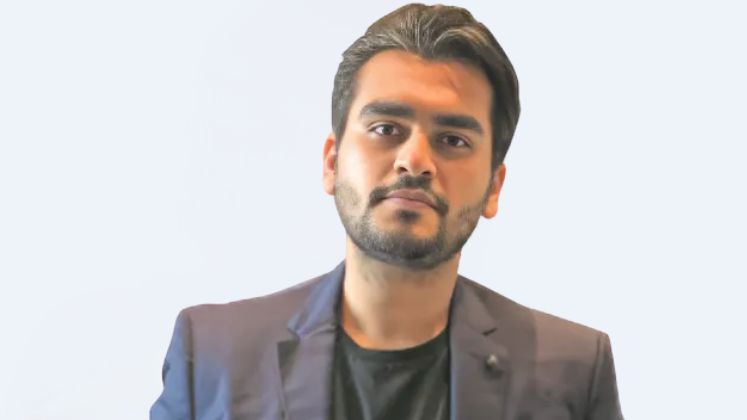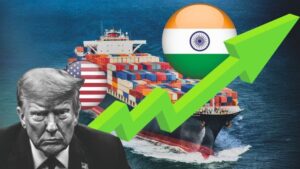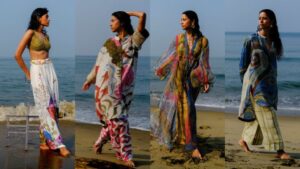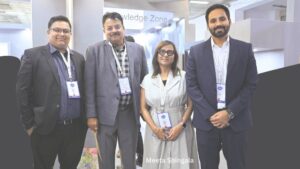The IPL 2025 action is heating up. Behind every scintillating wicket, flying six and gravity-defying catch is a jersey built to perform. Each IPL jersey is powered by Juric, a high-performance polyester fabric that’s moisture-wicking, stretchable and UV-protected. Juric was developed in Silvassa, which also supplies most of the greige fabric. The processing, however, takes place in Surat. Leading the charge in this regard is Meera Cotton & Synthetic Mills, a vertically integrated manufacturer producing 120 tonnes of fabric daily, including over 80 tonnes of Juric in various high-performance blends.
Meera’s journey began in 1994 with the production of polyester draw texturised yarn, followed by forward integration into circular knitting in 2000. The garment division launched in 2012, initially focused on woven fabrics, but post-Covid, it pivoted to polyester knits.
Today, Meera operates over 500 knitting machines, including more than 400 open-width and finer gauge machines procured specifically to produce Juric. “Even in China, you won’t find this many open-width machines under one roof,” stated Jay Jayesh Shah, Director, Meera Cotton & Synthetics Mills. Its garment unit is located in Bhiwandi, while the yarn and fabric units are in Silvassa.
Nearly 50 per cent of the garments produced by the company are made using various Juric blends. Over 80 per cent of the raw materials used by the company are sourced locally. However, some specialised yarns such as nylon, spun siro and Elastomultiester are imported to meet specific performance requirements.
We caught up with Jay to know more about the company’s approach to product development, delivery timelines and its plans for future growth.
AR: What exactly is Juric fabric made of and how do you bring it to life?
Jay Jayesh Shah: Juric is actually something really special for us! It’s completely made in India. We developed it almost a decade ago for an importer who was sourcing similar fabric from China. At his request, we kept it exclusive and didn’t share it with anyone else for nearly two years. The original version was a 92 per cent polyester and 8 per cent spandex interlock fabric, finished at 220 GSM. We used 75/36 DTY and 20D spandex as raw materials. Since then, we’ve fine-tuned it across various GSMs and yarn compositions. Today, some of the most widely used variants include 75/72 with 20D spandex in 220, 250 and 280 GSM options—and even 100/48 with 20D spandex in a 94/6 poly-spandex blend at 240 GSM.
We also have what’s called ‘Semi Juric’, which is 100 per cent polyester with a 2-way mechanical stretch. And for our garment division, we’re pushing boundaries, producing Juric with up to 22 per cent spandex for extra flexibility.
Now, what makes Juric really special isn’t just the blend. It’s the way the yarn and knit work together. Polyester yarn, for one, is incredibly strong. It’s one of the toughest fibres out there. And interlock knits, by nature, offer mechanical stretch and good recovery. When you combine that with spandex, you get even more stretch and better recovery, which is exactly what’s needed for sportswear. Think of all the movement, the pressure on seams, the need for flexibility. Juric is built to handle that.
We also apply specific performance treatments to the fabric depending on the end use. Moisture management (wicking), UPF 50 for UV protection, Quick Cool technology and antimicrobial finishes for odour control are some of the processes we use. These can be done during fabric processing, but they usually last only a few washes. For durability that lasts the entire lifecycle of the garment, it’s best to use yarns with these properties built in. That’s what we do for high-tech fabrics like Juric.
AR: Besides Juric, what other smart fabrics power IPL jerseys?
Jay Jayesh Shah: Just to clarify, not all IPL jerseys are made from Juric. There are other smart fabrics like interlock dot knits, rice knits, single jersey polo knits, single jersey dot mesh and both transfer and single jersey jacquards. Each of these have specific properties depending on the sport and the kind of performance needed. For example, the current India jersey is made using a transfer jacquard fabric, which offers unique texture, breathability and structure tailored for elite-level gameplay.
| “One of the top retailers in the country recently ran a pilot project for fast fashion with a 30-day ‘mind to market’ timeline. We delivered over 75 per cent of their total volume in that phase.” |
AR: Tell us what your floor looks like—what machines, what scale, what product mix. How does that translate into value for your buyers?
Jay Jayesh Shah: Vertical integration is one of our biggest strengths. This gives us a massive advantage in terms of agility and control. In India, most yarn set-ups have historically catered to woven fabrics, but knitting demands a completely different level of precision. Even the tiniest inconsistency in yarn can result in visible defects like bareness in knitted fabrics. Because we control the entire process, we’re able to ensure top-tier consistency and eliminate those issues from the get-go.
With everything aligned, from spinning to knitting to garmenting, we can turn things around quickly without compromising on quality.
That control is backed by scale. Our installed capacity is around 44,000 metric tonnes each for yarn and fabric and about 80 per cent of the yarn we produce is used internally, helping us maintain consistency and speed. Our garmenting capacity stands at 3.6 million units annually. On the yarn side, we manufacture bare-free polyester textured yarns across a wide denier range from 50D to 300D. These include types like semi dull, full dull, cationic, mélange, Taspa, air-covered, high-twist and cotton-feel mechanical stretch yarns. For fabrics, we produce a wide variety of knitted constructions using interlock, single jersey and interlock jacquard machines. Structures include plain interlock, dot knits, rice knits, dot mesh, Roma, Scuba, polo knits, looper fabrics and crêpes. We manufacture these in blends such as 100 per cent polyester, poly-spandex with up to 27 per cent spandex, poly-viscose spandex, viscose spandex, modal-poly spandex, 100 per cent viscose, 100 per cent modal, modal spandex, poly-viscose-wool spandex and nylon-spandex with up to 38 percent spandex.
AR: Who relies on you for their fabrics and fashion?
Jay Jayesh Shah: We supply fabrics to thousands of customers through a network of over 300 active brokers. Some of the prominent names among our direct clients include Arvind Limited, Banswara Industries, Ginza Industries and Pranera. In garments, we focus entirely on MMF-based knitwear across activewear and fashion categories. This includes T-shirts, track pants, tights, sports bras, shorts, dresses, tops and bottoms.
We cater to leading domestic retailers such as Reliance Retail, Landmark Group and the Aditya Birla Group. Internationally, we cater to prominent European brands such as Lefties, Terranova and Tally Weijl and we’re currently handling large volumes for LPP. In the US, we’re actively supplying through importers. From a technology standpoint, our texturising and twisting machines are configured to deliver the quality required for circular knitting. We have some of the finest gauge knitting machines in the country, going up to 40 gauge in interlock and 44 gauge in single jersey. Out of the 580 knitting machines we run, more than 400 are fine gauge, 32 and above and open width.
AR: What’s next on your growth radar?
Jay Jayesh Shah: Our garment division is getting a serious upgrade! We’re increasing our capacity threefold with a brand-new factory that’s set to kick off commercial production by June 2025. This upgraded facility in Bhiwandi will house 500 state-of-the-art Juki stitching machines, a fully automated Lectra- Gerber cutting room and even a bonding (seam-sealing) set-up dedicated to performancewear like tights and sports bras. It’s going to be a fully compliant unit, ready to meet global standards and work with any international buyer.
Once it’s up and running in mid-May, we’ll be producing over a million garments a month, which is huge. But what really sets us apart is that we’re going to be the only company at this scale focused purely on garments made from MMF-based knitted fabrics—that’s our niche and we’re owning it. And that’s not all! we’re also planning to double our yarn and fabric manufacturing capacity by 2027. So yes, big things are happening and we’re just getting started!







